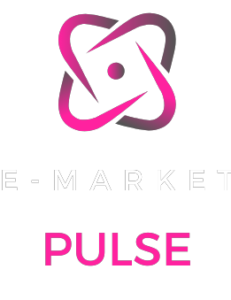

Understanding Paid Advertising on Third-Party Platforms
In the competitive landscape of e-commerce, paid advertising on third-party platforms has become an indispensable tool for sellers seeking increased visibility and sales. This comprehensive guide breaks down the options available for paid advertising within popular third-party platforms, providing insights into creating effective campaigns that maximize the impact of your digital marketing efforts.
1. The Role of Paid Advertising in E-Commerce
Paid advertising is a strategic approach to cut through the digital noise and ensure your products reach a targeted and relevant audience. In the context of third-party platforms, these advertising options are integral to standing out in a crowded marketplace.
a. Instant Visibility in a Competitive Landscape
Paid advertising provides instant visibility for your products. It ensures that your listings are prominently displayed to potential customers, even in highly competitive markets.
b. Targeted Reach for Specific Audiences
Paid advertising allows you to define and target specific audience segments. This precision targeting ensures that your ads are seen by individuals likely to be interested in your products, increasing the chances of conversion.
c. Measurable ROI and Analytics
One of the key advantages of paid advertising is the ability to measure return on investment (ROI) through analytics. Sellers can track the performance of their campaigns, evaluate key metrics, and adjust strategies accordingly.
GET EXCLUSIVE ACCESS TO OUR EXPERTS THIRD PARTY PLATFORM SELLERS' TIPS AND ADVICE:
- Get AHEAD of the Competition.
- FREE Membership to Sarah’s Weekly Insiders secrets.
- FREE tailored resources and gifts.
- PLUS qualify to receive personal email support.

* We respect your privacy. We will not spam you.
2. Paid Advertising Options on Popular Third-Party Platforms
Explore the diverse options for paid advertising within popular third-party platforms, each offering unique features to help sellers achieve their marketing goals.
a. Sponsored Product Listings
**Platform Example: Amazon**
Sponsored product listings appear prominently in search results and product pages. Sellers bid on keywords, and the product is displayed when users search for those terms, boosting visibility and potential sales.
b. Promoted Listings
**Platform Example: Etsy**
Etsy’s Promoted Listings allow sellers to boost the visibility of their products within the Etsy marketplace. Sellers pay a fee for increased exposure, and the promoted items appear prominently in relevant search results.
c. Sponsored Brands
**Platform Example: Amazon**
Sponsored Brands on Amazon enable sellers to showcase a collection of products along with their brand logo and a custom headline. This option is effective for brand awareness and promoting a range of products.
d. Google Shopping Ads
**Platform Example: Google Shopping**
Google Shopping Ads display product images, prices, and store information directly in Google search results. These ads appear when users search for products, providing a visual and informative display.
e. Facebook and Instagram Ads
**Platform Example: Facebook/Instagram**
Facebook and Instagram Ads offer a range of advertising formats, including carousel ads, photo ads, and video ads. These platforms allow precise audience targeting based on demographics, interests, and behaviors.
3. Creating Effective Paid Advertising Campaigns
Dive into the strategies and best practices for creating impactful paid advertising campaigns on third-party platforms.
a. Defining Clear Campaign Objectives
Clearly define your campaign objectives. Whether it’s increasing brand awareness, driving traffic to your third-party listings, or boosting sales, having well-defined goals guides the structure and content of your campaign.
b. Conducting Keyword Research
For platforms with keyword-based advertising, conduct thorough keyword research. Understand the terms your target audience is likely to use when searching for products similar to yours.
c. Crafting Compelling Ad Copy and Visuals
Create compelling ad copy and visuals. Clearly communicate the value proposition of your products, highlight unique selling points, and use high-quality images that grab attention and showcase your offerings.
d. Setting a Realistic Budget
Establish a realistic budget for your campaigns. Understand the cost-per-click (CPC) and conversion rates on the platform to ensure that your budget aligns with your advertising goals and expected returns.
e. A/B Testing for Optimization
Implement A/B testing to optimize your campaigns. Test different ad copy, visuals, and targeting options to identify what resonates best with your audience and continually refine your approach for better results.
4. Tracking and Analyzing Campaign Performance
The success of paid advertising campaigns relies on continuous monitoring, analysis, and adjustments based on performance data.
a. Utilizing Platform Analytics
Leverage the analytics tools provided by the third-party platform. Monitor key metrics such as impressions, clicks, conversion rates, and return on ad spend (ROAS) to assess the performance of your campaigns.
b. Evaluating Conversion Paths
Understand the customer journey and conversion paths. Analyze how users interact with your ads and what actions they take after clicking. This insight helps refine your strategies for better conversion rates.
c. Adjusting Strategies Based on Data
Make informed adjustments based on campaign data. If certain keywords, ad placements, or targeting options consistently underperform, refine your strategy to allocate budget and resources where they yield the best results.
5. Adhering to Advertising Policies and Guidelines
To ensure the effectiveness and longevity of your paid advertising efforts, it’s essential to adhere to the advertising policies and guidelines of the third-party platform.
a. Familiarizing Yourself with Platform Policies
Thoroughly understand and adhere to the advertising policies of the platform. Violating these policies can result in ad removal, account suspension, or other penalties that may harm your brand’s online presence.
b. Staying Informed About Updates
Platforms frequently update their advertising policies. Stay informed about any changes to ensure ongoing compliance. Regularly review platform guidelines to incorporate updates into your advertising strategy.
c. Building a Positive Brand Image
Craft advertisements that contribute to a positive brand image. Avoid misleading claims, use clear and accurate visuals, and focus on providing a positive and trustworthy experience for users interacting with your ads.
Conclusion: Elevating Your Brand with Strategic Paid Advertising
In the dynamic world of e-commerce, paid advertising on third-party platforms is a strategic imperative for sellers aiming to elevate their brand visibility, attract a targeted audience, and drive sales. By understanding the diverse options available, creating effective campaigns, tracking and analyzing performance, and adhering to platform policies, sellers can harness the full potential of paid advertising to stand out in the competitive marketplace. Elevate your brand and products through strategic paid advertising, ensuring that your offerings receive the attention they deserve in the digital marketplace.
MORE LIKE THIS...
Bringing you the latest information, ideas, products and services for your E-commerce business.
Copyright 2024 E-Market Pulse
Contact Us
We may receive compensation from partners listed through affiliate partnerships, at no cost to you. This doesn’t influence our ratings, and the opinions are our own
Subscribe to our Newsletter
Get updates on products and services specially targeted to help you succeed.
